Managing a fleet consisting of 300 haulier trucks across the Peninsular and East Malaysia is no easy feat, but Shell manages to do so with some skill. Fatality figures around the globe for the energy provider, including its oil rigs and other establishments, tallied to just seven last year — tragic, but wildly impressive given that these figures averaged in the twenties years before.
The goal is of to reach zero fatalities. Aptly named “goal zero,” Shell’s mission is one that aims to bring down annual fatality figures to nil. More than this, it wants to ensure that no person is even harmed. On a recent trip down to Port Dickson to visit the Konsortium PD (KPD) haulier company contracted by Shell, I rode along with Datuk Azman Ismail, the MD of Shell Malaysia, to gain further insight into his company’s goals for safety.
“Goal Zero is an international aspiration that Shell companies around the world set for themselves,” he said. Given that we were there to witness how Shell’s contracted hauliers seamlessly operate day in day out, that remained the focus of our conversation. “Our trucks travel the equivalent of four times around the world every day. We have roughly 300 trucks that work in our eco system, and they all do this every day. It’s a great team effort,” he said.
Yes, over 300 Shell-contracted haulier trucks travel across Malaysia everyday, covering up to 50 million kilometres a year — the equivalent to the distance of travelling four times around the globe a day. Truck drivers are not allowed to complete a four-hour drive without at least a 15-minute break and can drive for no more than nine hours a day, and work for a total of 12 hours each day — they will be sent home, otherwise.
Obviously, obedience and discipline are top priorities, but the one of the world’s leading energy companies doesn’t rely on this alone. In a bid to maintain its safety on the road, Shell enforces what is called the Road Safety Triangle. These safety standards cover three areas of strategic importance.
The first is Vehicle Management. Here, Shell’s standards require that all hauliers provide trucks that pass a stringent set of specifications — one of these items include having an In-Vehicle Monitoring System (IVMS). Regular upkeep and verification of this Preventive Maintenance Programme (PMP) are also required, among other items.
The second element to its Road Safety Triangle is Driver Management. Each haulier driver must pass a set of stringent tests before being hired. Shell’s haulier partners are in charge of the hiring of drivers, but of course, all haulier companies willingly adhere and adopt the energy company’s standards.
Drivers are also bound to a strict set of rules that ensure optimal safety — for instance, they have limited working hours to prevent fatigue, random audits, and constant behavioural monitoring.
Finally, there’s Journey Management, dictating that every route must be carefully selected, planned and followed. The Journey Management Plan (JMP) helps drivers manage their stress and fatigue levels, allowing backup drivers to takeover the wheel when necessary. It all sounds very cumbersome, but each driver is as committed to the cause as the other.
“I have been here for 23 years already, and if it is possible, I would like to continue here until I’m 60,” said one of the KPD drivers we managed to briefly speak to. “We are proud to adopt these safety standards – be it on the road or at our work place. It’s not just for us, it’s for those around us.”
One of Shell’s key initiatives is to drive home safety as a culture, and its approach has clearly been quite effective. “We attend defensive driving courses every other year. Most normal drivers on the road don’t, but should,” said Fazil bin Abdul Kadir, a senior KPD driver we managed to get a hold of. “We don’t just practice this safety on the road while we work, we bring this mindset home with us and to everyone around us. Take seat belts for example. If someone doesn’t want to wear their seat belts, they can get out of my car.”
“Many of our employees come to Shell from different companies. After six months, you can ask them how they feel. Many of them are surprised to see how much we care about safety,” explained the managing director. “It’s not just about our employees, it’s also for the people who support us in delivering our services – we call it an eco-system. Our haulier providers share the same mentality.”
On the road for my first ever trip in a fully-loaded haulier truck bound for a petrol station some 30 km away, more safety reminders were sent my way. Mobile phones must be switched off — even as a passenger, the driver wouldn’t start the haulier’s engine without knowing my phone wasn’t just on silent, but completely switched off.
Getting into the Mercedes-Benz Actros required a spot of acrobatics in itself, with a guide telling me which foot goes where climbing up and how to get off later on without hurting or embarrassing myself. In the seat, the view was fantastic — you get to see miles on ahead. Setting off masterfully, our driver, Arulprakash, inched his way out of the Shell station and on to the road.
Working our way through a few backroads first, it immediately became noticeable how uncomfortable the journey would be. The seats ride on their own suspension (do forgive me for the shaky photos in the gallery) and if you don’t concentrate, you will end up losing your lunch.
And then you notice what Arul himself has to go through, and things get really scary. For one, that spectacular view ahead I mentioned earlier is really just limited to what’s ahead of you. There’s barely any sight of things to the side of the truck, let alone what’s behind. And no, there aren’t any assistive cameras of any sort here — just good ol’ fashioned mirrors.
“There are always threats on the road for us,” said Arul. “We have to be prepared to deal with every situation. Sometimes dangers come when we travel in smaller towns, or sometimes when we encounter impatient drivers on the road.”
“These threats come from all around us. As a driver, focus and respect for the cargo is most important. To other drivers, I would like them to know that we all do our best to avoid incidents on the road, and we do our best to warn them of any impending dangers,” he added.
Believe me, it is absolutely terrifying to drive a haulier, but these guys do it day in, day out, without incident (mostly). Every driver at KPD knows that all it takes is one strike, one crash, and they’re out of a job. But they aren’t too worried about that because of the stringent safety procedures enforced from the ground up.
This particular trip we were on was a short one, the driver explained. He said that a typical day for himself began at around 3 pm in the afternoon and ended at roughly 3 am the next day. He performs 12 hours of work each day, nine of which are spent behind the wheel of a truck.
How does he do it? Sheer grit, it seems. Falling sleepy from the sheer monotony of the experience, I asked him how he could stay up driving for as long as he does. Arul explained that he did have a radio, which was nice, and the guarantee of working air-conditioning — drivers are allocated different trucks each time they head out, so there’s no use for personalising your own with photos to cheer you up, and no, that’s not the worst of their problems.
Other drivers on the road, like you and me, have a huge affect on haulier drivers. As it is, visibility is poor in a haulier, there’s almost no sight of what goes on behind, for a driver. Bound to a speed limit of 70 km/h on highways, Shell-contracted hauliers are constantly antagonised by other road users for being too slow.
But Arul said he doesn’t mind being shown the “finger” on occasion, largely because of his patient and understanding attitude. He did mention that “it’s like a bomb, sir,” when referring to his precious cargo. “We try our best sometimes to warn people around us, but they often mistake our actions, like honking, for aggression. We really just want others to be safe, too,” Arul said.
So, the next time you see a haulier, do remember to spare a thought for immense challenges they face, and give them their space. Unless of course you come across a poorly-mannered one that specifically puts others in danger, then feel free to report them to the Land Public Transport Commission (SPAD).
To conclude, here are some tips from Shell Malaysia to remember when driving around hauliers.
- Keep your distance – do not underestimate a truck’s brakes. They are very efficient and you may not have enough time to slow down if they suddenly slam the brakes.
- Avoid a haulier driver’s blind spots – do not overtake a truck when it is making a turn or entering a junction. Due to the characteristics of the trailer, sometimes the truck will need to move to the opposite direction before turning in to its actual desired direction. Take note of its indicator lights.
- For motorcyclists – do not take shelter from the rain or sun next to a moving haulier. The driver will not see you.
- Likewise, pedestrians shouldn’t walk too closely in front of a haulier truck. The driver may not see you, and drive away not knowing you are there.
- Avoid turbulence – small vehicles and motorcycles should be mindful of the wind turbulence created by a truck. Staying too close can cause you to be affected by the turbulence and lose control of your vehicle.
Looking to sell your car? Sell it with Carro.

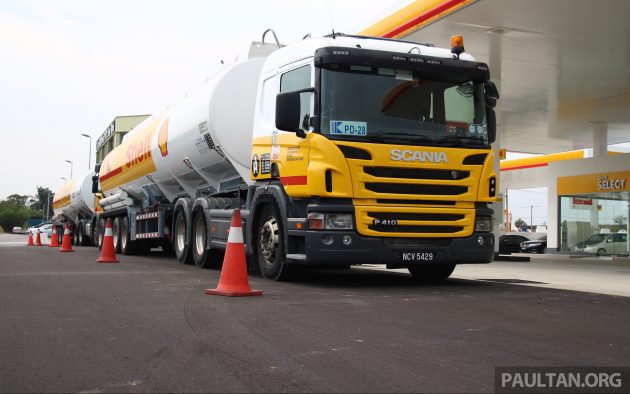
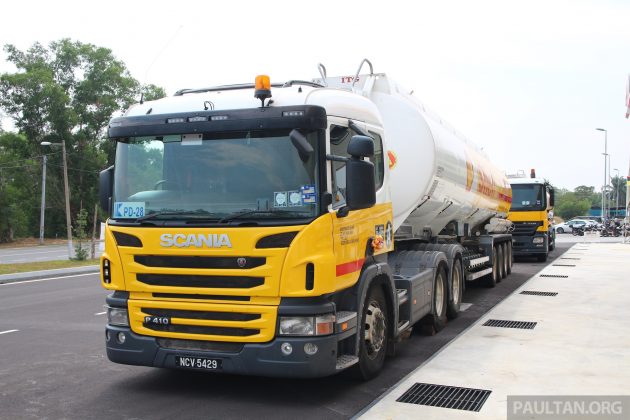
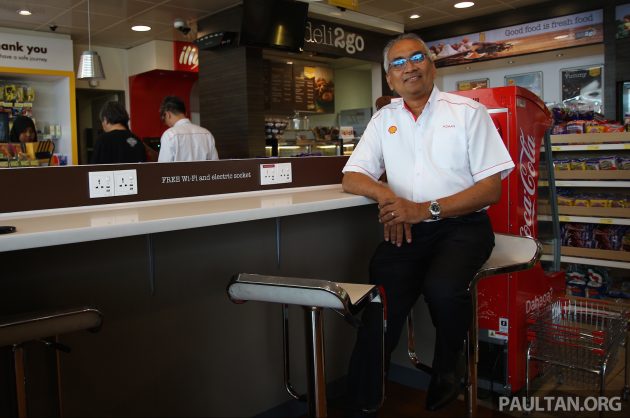
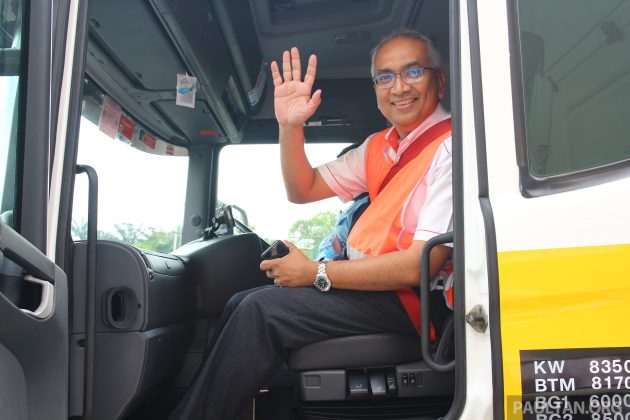
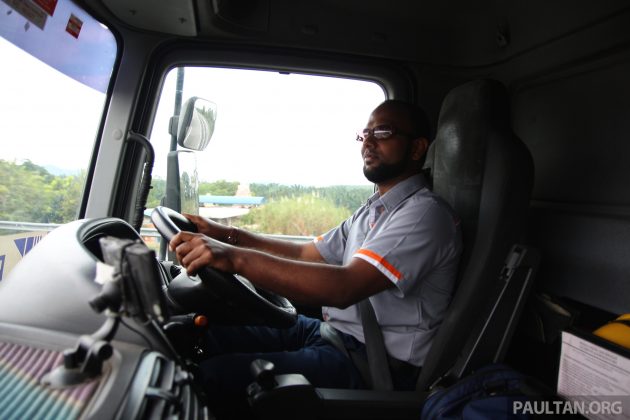



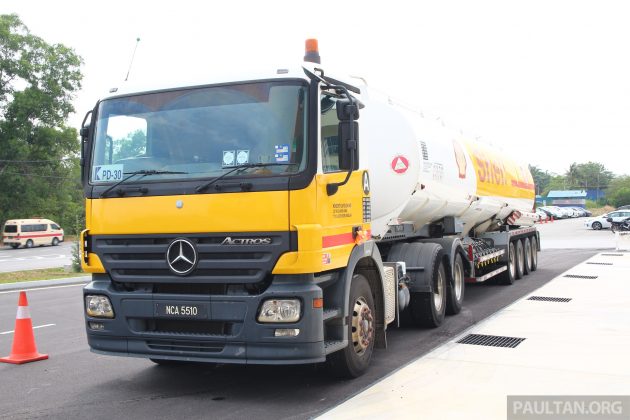

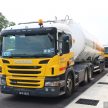







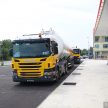
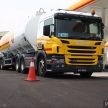

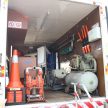
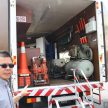
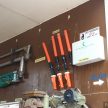
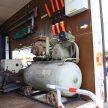
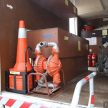







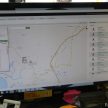
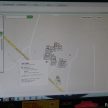



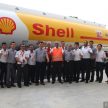




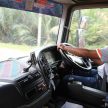
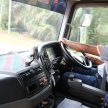

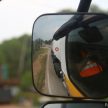
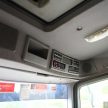
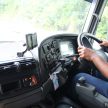
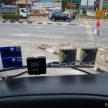
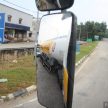
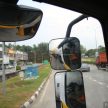

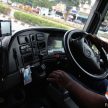

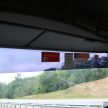

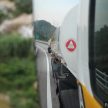
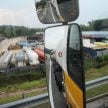


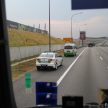
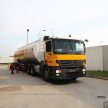
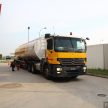

Not a fan of sponsored content, but this is a good read.
Does Shell install a mechanical/electronic speed limiter on its trucks? If so what is the cost, and do they have numbers of fuel savings and efficiency gains from driving at 70km/h?
If anything could save lives, a speed limiter would. Why are we allowing these 30-40 tonne vehicles to run at 120km/h everywhere? The danger is just so high its unbelievable, they are moving death-traps. If Shell can do it, the country, the government, everyone can.
Bro, dont assume its sponsored just becos The crew at paultan wrote about a particular company…. I find the article useful to road users….now waiting for other heavy vehicle drivers to learn from shell tanker drivers?
For your info, when these trucks are doing 70kmh, a proton iswara or wira on 13 inch wheels are doing between 100-110kmh. It’s because the mechanical gear has some effect on the reading compare to sensor type speedo.
Try change the wheels to 15″ size for example, and the reading will become heavier.
This is also the same reason why many drivers are claiming these old cars are hogging the fast lane. They can be doing 105-115kmh while your camry is 98kmh. So drivers, no need be mad ok
yes, they have the speed limiter which is set at 80kmh.
Great story….